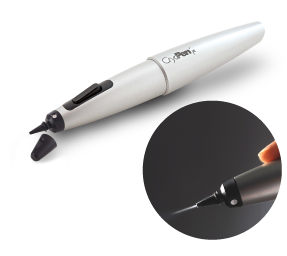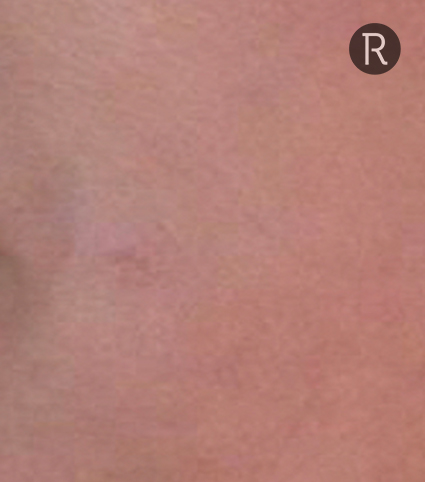Skin Tag & Milia Removal, London
Skin Tags and Milia are very common complaints that can easily be treated at Rejuvence Clinic with a variety of services including Cryotherapy and Aerolase Era Elite. Skin Tags can occur anywhere on the body and tend to be more common amongst women than men, especially after pregnancy. On the face and neck they can make one feel self conscious. When in more delicate areas such as the groin and armpits they can be a nuisance and get in the way of shaving as well as get caught on clothing. Milia are very stubborn small lesions that can occur in clusters especially around the eyes.
What are skin tags?
The medical term for skin tags are acrochordons. These are small polyp type growths. They are also sometimes known as fibromas. They are benign (NOT cancerous) in nature. When associated with a virus such as Human Papilloma Virus they are often referred to as warts as opposed to skin tags. Viral warts can be contagious and hence best to have them removed.
What do skin tags look like?
Skin tags are often described as a small growth with a narrow base or stalk, attaching it to the skin. They are different to moles in that they are often more mobile, less pigmented and moles tend to have a much wider base. They are, on the whole, completely harmless.

Where do skin tags occur?
Skin tags are especially common in the armpits and groins. They are often associated with skin folds and where skin undergoes friction or chafes. This can be a nuisance as they can often get caught on clothing and make it difficult to shave. They are also relatively common on the neck, face, chest and back. In men, skin tags or warts on the neck can be especially problematic when it comes to shaving.
What is the cryopen?
The Cryopen is a pen shaped device that is able to discharge cold liquid nitrogen. The liquid nitrogen is used to freeze the skin tags. As a result they usually necrose (turn pale) and fall off leaving behind a relatively small, discrete scar that is often not noticeable. For larger skin tags a second and even third session of Cryopen treatment maybe needed. The treatment is often very tolerable and many clients do not opt for local anaesthetic creams. Complications after cryotherapy for skin tags are few and far between. For further details on the Cryopen please visit our Cryotherapy page.





What are Milia?
Milia are small white or yellow pimple-like lesions that can occur in clusters around the eyes and on the nose, although they can appear anywhere on the body. Milia are most common in newborn babies and these usually resolve on their own. However, milia can occur at any age and become quite stubborn.
Milia are the result of dead skin cells (keratinised tissue) that become trapped under new skin instead of shedding away naturally. They are normally the result of skin damage from rashes, injury or sun damage. They are also more likely in those who don’t follow an established skin care routine, use heavy makeup that can clog up pores, or have associated skin conditions such as eczema or rosacea.
Widespread milia can be very difficult to remove and often over the counter products and home remedies don’t work. At Rejuvence Clinic we offer a number of treatments that can help with the removal of milia including exfoliation and chemical peeling with regular Hydrafacials, cryotherapy or ablative Erb:YAG lasers.
Aerolase Era Elite for ablation of Skin Tags & Milia
Aerolase Era Elite is a fully ablative Erb:YAG laser with a 300-microsecond pulse duration. It is a very precise and accurate device providing options for superficial, medium and deep ablation with minimal pain and no need for cooling. It is also safe in skin of colour with little incidence of complications. With spot treatments it does not result in demarcation lines.
Aerolase Era Elite can be used to fully ablate and vapourise skin tags and milia. Er:YAG lasers have also been proven effective for removing benign, premalignant, and malignant skin lesions. Er:YAG laser could be used by applying multiple passes over the target lesion (in this case a mole) until it is no longer visibly apparent. This approach has also been proven effective for congenital melanocytic nevi in new born babies and acquired melanocytic nevi in adults. Use of numbing cream is enough to make the treatment tolerable with minimal pain.
Era Elite can smooth out even delicate areas of skin around the eyes and is also very effective in treatment of xanthelasmus (cholesterol deposits in the corners of the eyes). Re-epithelialisation (regeneration of the skin) occurs within 4 to 7 days. Depending upon the depth of the lesion there can be some changes in pigmentation but this can be subsequently treated with the Aerolase Neo Elite for the best cosmetic result. Treatment takes only a few minutes with 2 to 3 days downtime.
Rejuvence Philosophy
At Rejuvence Clinic we are very experienced in the treatment and removal of skin tags and milia in London. Skin Tags are relatively simple to treat and we have a number of options for removal. Cryotherapy and surgical shave or elliptical excision are very effective. Milia on the other hand can be quite stubborn and often occurs in delicate areas such as around the eyes. In addition to Hydrafacial and cryotherapy, most effective is Aerolase Era Elite fully ablative laser. This can help to clear these lesions completely but more than one session maybe necessary. We recommend a consultation with one of our doctors and often cryotherapy and laser treatments can be performed on the same day.
Skin tags can be easily removed using a variety of techniques. Multiple skin tags can be removed at a single treatment session. The procedure is often relatively painless, although local anaesthetic creams and/or injections are still needed. Following removal, there is a risk of recurrence of skin tags and this should always be kept in mind.
Using the dermablade it is possible to have larger skin tags cut off at the base of the stalk attaching them to the body. This procedure is carried out using local anaesthetic. There is an initial sting from the local anaesthetic as it is infiltrated but hereafter the rest of the procedure is painless. Depending upon the width of the base of the tag, a handful of stitches maybe needed. Resultant scarring is minimal except where there are an extremely densely populated region of skin tags.
Plasma devices are a relatively new innovation and can be used to treat skin tags extremely efficiently. Again they are not best suited to the treatment of the larger skin tags. However, the resultant scar is small and discreet and the vast majority of clients that opt for plasma are extremely satisfied.













